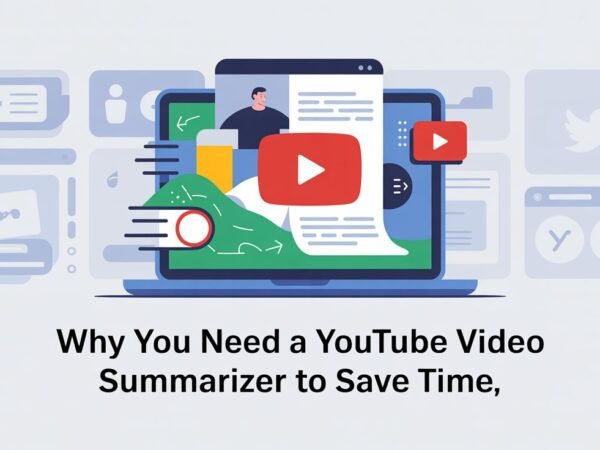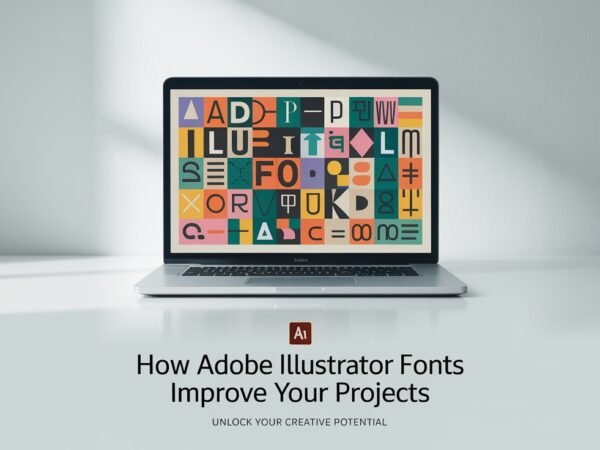In the modern architectural scenario, a good, catchy website can be a valuable tool for any business. A well-done site grabs users’ attention, builds their confidence, and requires them to engage in some form of activity to arrive at a decision. These articles will explore fundamental approaches to creating web designs that do more than earn a visitor’s initial attention but, more importantly, guarantee that they come back for more, thus contributing to the longevity of a brand’s viability.
Why Effective Website Design Matters
Knowing that good website design is about more than just the looks is essential. In a web design company in UK, it is advanced in functionality, ease of operation, and understanding of customer wants. In other words, when a site is created following the proper design guidelines, users spend more time on the site, are more active, and are more likely to transact. Adobe’s survey reveals that 38% of the population will only abandon a site if the content or design is appealing. It is not coincidental to reiterate that good looks sell. Still, in website design, it is usability and establishing trust that ultimately improves business outcomes.
Critical Strategies for Effective Website Design
Here are some practical tips for creating a highly effective website and attracting users’ attention.
Prioritize User Experience (UX)
User Interface Design is the cornerstone of an effective website, and it’s all about usability. Suppose you understand how users engage with the website. In that case, designing a perfect user journey that meets the user’s needs in the shortest time possible becomes easier.
- Intuitive Navigation: Hypothesized that clarity of the paths in combination with logical off-path links assist users in locating the information they seek. For convenience, consider categories and subcategories, the stickiness of menus and labels, and their pertinence. Convenient website organization: Amazon is one of several websites that can rank products by categories, prices, and ratings.
- Mobile Responsiveness: A responsive design is necessary since more than 50% of traffic comes from mobile devices. Responsive web design means the website layout adapts to screen resolution, making it easy for users to access the site through a smartphone or tablet. This improves user experience, and it is essential to note that Google ranks mobile responsive websites higher.
- Minimal Load Time: A website’s loading time, or how quickly the webpage is loaded, is one of the crucial factors of overall usability. A fast loading speed is critical because a slow loading speed results in high bounce rates among users. Actions such as resizing images, minifying files, and using a CDN will be helpful if the website’s goal is to decrease the load time. For example, after making those changes, Pinterest increased its load time and gained 15% in SEO traffic.
Success Case Study:
Spotify’s mobile app is an excellent example of effective UX. Its streamlined design, uncluttered layout, and intuitive controls create a seamless experience, making it easy for users to discover and play music on mobile or desktop.
Failure Case Study:
MySpace’s design significantly needed more intuitive navigation and responsiveness as mobile usage surged. Its cluttered layout and slow load times contributed to a steady decline in users, demonstrating the need for a flexible and user-centered design.
Use Consistent Branding and Visual Design
Consistent appearance enhances the perception of brand credibility and gives customers the confidence they need to use a given website. Continuity of colors, type styles, and themes within the media allows users to see continuity in the website regardless of where they navigate.
- Color Scheme: Choose colors consistent with your brand’s values and looks. For instance, environmentally conscious companies use green to represent health and environmental conservation. In contrast, companies dealing in technological items may use blue color to define trust. Consistent use of colors also assists in enhancing an organization’s brand familiarization.
- Typography: Choose fonts corresponding to your brand vision and ensure they are readable on all target platforms. Stick to a minimum of three font styles for an unmatched professional look.
- Imagery and Media: This means that high-quality and relevant pictures and other multimedia that one wants to add to their site will help make the site very impressive to visitors. For instance, companies that produce lifestyle products such as GoPro cameras and accessories have robust and vivid action images that reflect the nature of the business.
Success Case Study:
Coca-Cola’s website is an excellent example of consistent branding. The red color scheme, iconic font, and creative visuals reflect the Coca-Cola brand, creating a cohesive experience that strengthens customer loyalty.
Failure Case Study:
Yahoo’s branding suffered due to inconsistent updates and the need for a unified theme. Frequent redesigns without a cohesive style caused user confusion and eroded brand identity, ultimately affecting its market position.
Craft Engaging and Valuable Content
Text is the main focus of any website. It should be used as an informational and entertaining tool to attract people. Your content must be timely, saleable, and search-engine-optimized to encourage a particular set of behaviors among your audience.
- Value-Driven Content: Write articles that would benefit the receiver, whether an ebook or user guide, a blog, or a guide to products. Info-training content can help your brand become familiar with your consumers and recognizable within your industry.
- Clear Call-to-Actions (CTAs): CTAs are crucial in controlling where a user ends up or what action the user takes. Please put them where users will likely see them, such as at the foot of articles or alongside products.
- SEO-Friendly Copy: To boost a website’s search engine ranking or to be positively identified by search engines, it is advisable to stuff the mass content with relevant keywords without jeopardizing the quality of the content. The correct usage of headers, meta descriptions, and image alt technologies makes your website more searchable and easily found by users.
Success Case Study:
HubSpot’s blog offers numerous guides, tutorials, and industry insights, establishing the brand as an authority in digital marketing. This strategy drives traffic and encourages users to engage with and trust the brand.
Failure Case Study:
J.C. Penney’s site suffered due to ineffective SEO practices, relying heavily on paid backlinks that led to Google penalties. Its search engine visibility plummeted, showing the risks of poor content strategy.
Leverage Interactive Elements
Quizzes, chatbots, and product customization help create an interactive experience on your website, keeping users engaged.
- Quizzes and Surveys: Another idea would be to combine the competitive spirit with a learning one: quizzes can turn browsing into an enjoyable experience. For instance, a skincare company will create a quiz where consumers must answer specific questions to find suitable products.
- Chatbots: Chatbots are an excellent tool for real-time interaction with customers, solving their queries, or directing them through the site. If integrated properly, chatbots will help improve customer service, increase customer retention, and boost the conversion ratio.
- Product Customizers: Enabling users to add personal touches to products like color, size, or design goes a long way toward increasing the number of customers. For instance, Nike provides individuals with opportunities to create their shoes, which results in interaction and customer loyalty.
Success Case Study:
Warby Parker’s virtual try-on for eyeglasses allows users to see how frames look on their faces using their device’s camera, making online shopping interactive and enjoyable.
Failure Case Study:
Target’s augmented reality feature initially experienced functionality issues, leading to a frustrating user experience. Slow load times and limited compatibility diminished the feature’s effectiveness, demonstrating that new features must be rigorously tested.
Ensure Accessibility and Inclusivity
Web accessibility is navigating a site and using all its components, including for a disabled person. How can individuals ensure their site is more welcoming for various users? The answer is to follow WCAG and make your website more friendly to everyone, enhancing SEOability and expansion.
- Alt Text for Images: Alt text is mainly used to help screen readers interpret images for visually impaired users. However, everybody will benefit from your content nonetheless.
- Keyboard Navigation: Most people prefer using keys on the keyboard instead of a mouse. Ensure all active controls like link buttons and form controls are only keyboard-accessible.
- Readable Text: Ensure the text is in clear contrast so that it is easily legible on different devices, and select legible fonts. Although this consideration is focused on visually impaired users, it makes the web a better place for everyone.
Success Case Study:
BBC’s website is highly accessible, featuring text-to-speech options, high-contrast text, and captioned videos, catering to a broad range of accessibility needs.
Failure Case Study:
Netflix’s early design needed more alternative text for images, making it challenging for visually impaired users to navigate the site. Its commitment to accessibility has since improved, but it highlighted the need to prioritize inclusivity in design.
Conclusion
An ideal website design combines beauty, utility, and market knowledge to develop a website that attracts visitors’ attention and makes them stay on the site and buy products. In an eCommerce web design company in UK, if businesses aim for meaningful interaction and engaged users, user experience, consistent branding, valuable and exciting content, and ease of access are the ways to go. When a business organizes its internet presence properly, it satisfies the average customer. It offers what other platforms in the market cannot.
FAQs
Why is mobile responsiveness crucial in website design?
Mobile responsiveness guarantees that no matter the device from which the website is accessed, it offers a comparable best experience on mobile, tablet, or desktop. Since most users access websites through mobile devices, this feature provides convenience for users.
How does practical website design impact conversions?
When the design is done correctly, it enhances the user experience by providing easy-to-find information, colorful content, and nice Call to Action buttons. This breeds confidence and leaves an early positive impression that enhances the company’s reputation and makes the users take specific actions, which are preferable, strengthening the company’s conversion rates.
What tools can help improve website accessibility?
WCAG 2.0 level A and AA compliance standard check online tools, such as WAVE, Axe, Color Contrast Checker, etc., to check and improve website accessibility. When a site is accessible, users are more satisfied, and the potential audience is increased.













